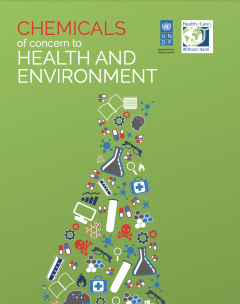
This document includes a list of chemicals of concern to human health and the environment. The list is based on systematic evidence reviews from authoritative sources, which identify chemical and material hazards of concern that are carcinogenic, mutagenic, endocrine disrupting and reproductive hazards (health hazards) and bio- accumulative and persistent to the environment and/or listed in International Environmental instruments (Conventions). The authoritative lists and conventions referred to during the process of shortlisting of chemicals of concern are:
- WHO’s International Agency for Research in Cancer (IARC) list of probable and known human carcinogens;
- The European Union list of Substances of Very High Concern and Restricted Substance List as determined under the Registration Evaluation and Authorization of Chemical Substances (REACH) Regulation.
- The California Proposition 65: Safe Drinking Water and Toxic Enforcement Act of 1986;
- The Minamata Convention on Mercury
- The Stockholm Convention on Persistent Organic Pollutants
- Rotterdam Convention on the Prior Informed Consent Procedure for Certain Hazardous Chemicals and Pesticides in International Trade.
The intended audience for the list are health sector procurement officers, sustainability coordinators, and others concerned with procuring and using safer and more sustainable materials. The list will also be shared with the suppliers, who are requested to identify products that contain these chemicals so that procurers can avoid them and substitute less hazardous, clinically appropriate alternatives.
This 1st version of the list of chemicals of concern will be updated regularly as new information becomes available. A detailed analysis of each chemical and its application in health products and services will be undertaken in phase II of the project. This will help health-care facilities and procurement officers gather information on the type of hazard, the application and uses of these identified hazardous chemicals and compounds in general and more specifically in products used in the health sector.
The identification and assessment of safer alternative chemicals and materials will then allow the health sector to procure and use more sustainable products to provide safe, healthy and more environmentally friendly health-care services.
